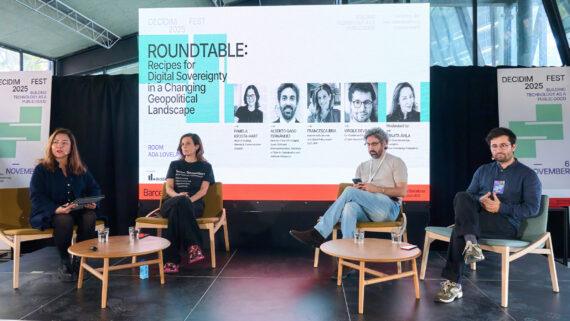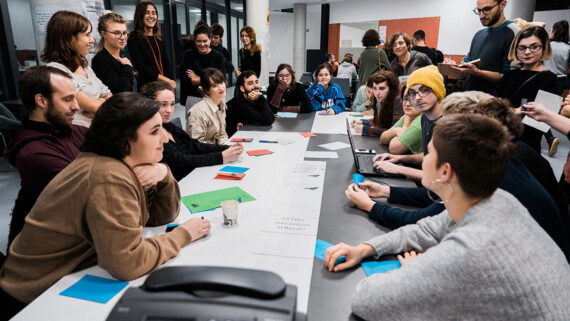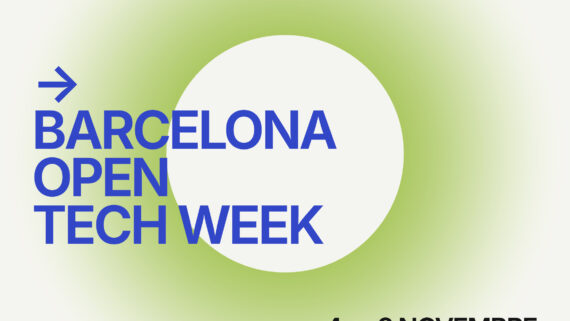A conversation with Ángela Precht and Laura Cabiscol about the exhibition «How to design a revolution: The chilean road to design» at the Design Museum of Barcelona.
Between 1970 and 1973, under the government of Salvador Allende, Chile carried out one of the most fascinating political experiments of the 20th century. In the middle of the Cold War, when the world was divided between two major poles of influence, Chile proposed a third way: democratic socialism. A peaceful revolution, chosen through the ballot box, that placed social justice at the center of the political project
The exhibition «How to Design a Revolution: The Chilean Way in Design», which can be visited at the Design Museum of Barcelona until November 16, explores how this revolutionary project was materialized through graphic and industrial design. Ángela Precht and Laura Cabiscol, coordinators of the project, explain the details of this unique experience.
From the Port of Valparaíso to the DHub of Barcelona
Bringing this exhibition from Chile to Barcelona was not an easy task. Laura Cabiscol recalls the nerves of the transoceanic transport: “There is a website where you can track your ship, and I checked it obsessively every day. One day I saw that the ship had turned around and was heading in another direction…”
The container was transferred between ships, was held up for days in Italy, but finally arrived on time to set up the exhibition. As Cabiscol says, “it’s like a relay race: from the warehouse to a truck, from the truck to the port, from the port to the ship…”
A program of activities to rethink the present beyond nostalgia
The exhibition is part of the legacy of the European Capital of Democracy 2024, but with a vision towards the future. Precht explains that “we wanted the activities to speak about the future and the present. Not something nostalgic, but something that could inspire a little.”
The program of activities at the Canòdrom takes the themes of the exhibition as starting points to ask the same questions today: How to promote citizen participation?, how to encourage reading in the digital age?, what happens when artificial intelligence makes decisions?, how to make revolutions from culture today?
CyberSyn or the “Socialist Internet” of the 70s
One of the most ambitious projects of Allende’s government was CyberSyn, known as the “Socialist Internet.” It was a super ambitious and very long-term project, but with a very Latin American reality: “They were given only one computer to implement it, when I think there were only five computers in all of Chile,” explains Ángela.
The solution was brilliant. They connected the country’s industries through Telex technology, telegrams. But the vision went much further, because “the idea was that this distributed technology would have different nodes and that people would have information at different levels, being able to influence in different ways.”
The most futuristic project even included domestic devices. “They wanted there to be small devices in people’s homes so they could vote on certain decisions.” A kind of participatory technological democracy 50 years ahead of its time.
But perhaps the most revolutionary aspect of CyberSyn was rethinking the citizenship-economy relationship. Cabiscol explains it perfectly: “Today we see the economy as something that happens and that almost no one controls, like the weather. The IBEX has gone up, the Shanghai stock exchange… it’s something that is happening and you have no agency. But with the CyberSyn project, the aim was to give citizens that agency and responsibility.”
It was, ultimately, an attempt to democratize the economy and make citizens have real power over decisions that directly affected them.
The loss of the common project
When we talk about the obstacles that this project faced, beyond the violence of the 1973 coup d’état, there is a deep reflection. The curators of the exhibition, Hugo Palmarola, Pedro Ignacio Alonso and Eden Medina, identified that “in the context of the Popular Unity there were two factors that usually do not come together; there was a common political project and there was the freedom to develop it,” explains Precht.
Today, according to the project coordinators, we have freedom, but we lack the common political project. And this absence has consequences, such as the trivialization of design, citizen disconnection from politics, and the loss of political pedagogy.
Communication, scale, and collectivity: lessons for revolution today
According to the coordinators, from the Chilean experience we can draw several lessons applicable today:
1. The importance of clear communication
“All the work they did to clearly communicate the policies, to explain to people why they were done, why they were necessary… That has been quite lost today,” adds Precht.
2. Rethinking the scale of projects
At the Culture and Revolutions day at the Canòdrom, a powerful idea emerged: to step out of the capitalist logic that every project must grow constantly. “If instead of a festival that starts with 1000 people and then grows to 5000 and 15000, we make more small self-organized festivals, we gave more space to local artists,” explains Cabiscol.
3. Recovering meeting spaces
All the spaces where people from different generations, different disciplines, who have not been through university can meet… all of this enriches the social fabric.
The exhibition «The Chilean Way in Design» is not only a look at the past, but an invitation to rethink the present. As Precht says, “design is a discipline that can be perfectly used for social justice, for democracy.”
At a time when Western democracies show signs of weakness, the Chilean experience of the 1970s reminds us that it is possible to imagine and build alternatives. That creativity, citizen participation and design can be tools to transform society.
The exhibition «The Chilean Way in Design» can be visited at the Design Museum of Barcelona until November 16, 2025.






